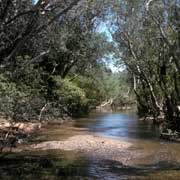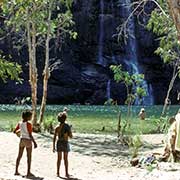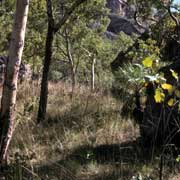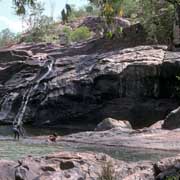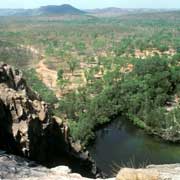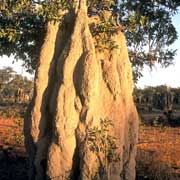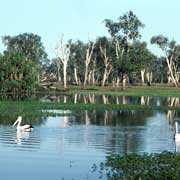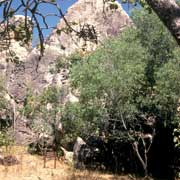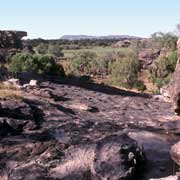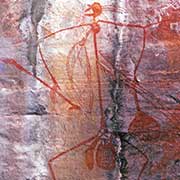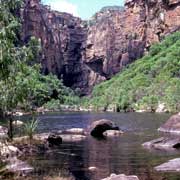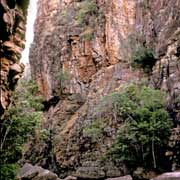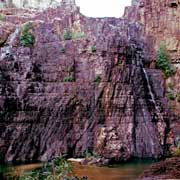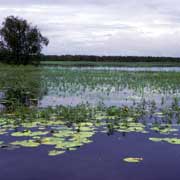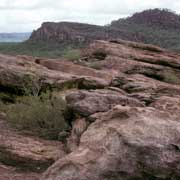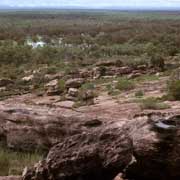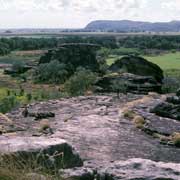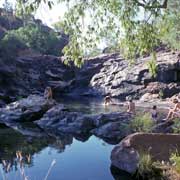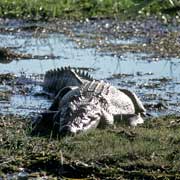Photos of Kakadu National Park, in the Top End of the Northern Territory, Australia
Kakadu National Park, in the Top End of the Northern Territory
The Gagudju people have given their name to this famous National Park, a World Heritage Area, comprising part of the western Arnhem Land plateau and the flood plains of the Alligator Rivers. It is Australia's largest National park, measuring almost 20,000 km². It has magnificent scenery: the rivers flow through deep gorges and form great waterfalls over the edge of the escarpment, in places up to 450 metres high.
you may then send it as a postcard if you wish.
The beautiful falls at Gunlom at Waterfall Creek Nature Park in the south west were formerly known as UDP Falls (UDP stood for Uranium Development Project, there was a, now disused, mine nearby) and is on a tributary of the South Alligator River in the south of Kakadu National Park. A scene from the movie "Crocodile Dundee" was shot here. It is a fantastic spot with great swimming and beautiful views from the top. More difficult to reach are Jim Jim and Twin Falls, at the end of a 50 to 60 kilometres rough bush track. The falls can be reached by four-wheel drive vehicle, but only in the Dry season when the falls don't flow; when they do flow, in the wet season, they are inaccessible by road and can only be seen by helicopter.
The flood plains support huge flocks of waterbirds and teem with fish. An early morning cruise on Yellow Waters Lagoon at Cooinda is unforgettable, with its profusion of birdlife and crocodiles on the shore. There are also many wonderful examples of Aboriginal rock paintings that can be seen in impressive galleries like at Burrungguy or Nourlangie Rock and at Ubirr or Obiri Rock. But there are many more that are of great ceremonial significance and therefore not accessible to tourists at the request of the Gagudju traditional owners, who are the custodians of the Park.
The East, South and West Alligator Rivers were named by surveyor Phillip Parker king in 1818 who thought the many saltwater crocodiles were alligators. The people of the Alligator River region spoke the Gagudju language and apparently the name "Kakadu" was given to them by anthropologist and biologist Sir Baldwin Spencer around 1912. The first stage of the park was proclaimed in 1979 when the first proposals for Uranium mining in the region were submitted. In 1981 it received World Heritage status and today receives over 200,000 visitors a year.



